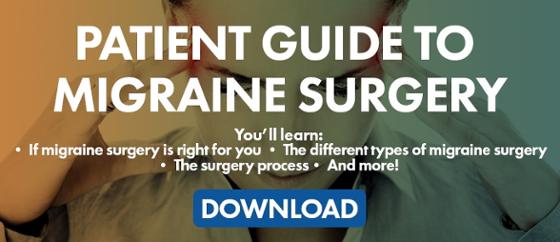In many migraine patients, the exact cause of the headaches is unknown. Individually, sufferers can discover their (often unique) pain triggers and learn to avoid them as far as possible, but this doesn’t explain why flashing lights, for instance, will cause a migraine in one person and leave another completely well.
Lately, there is evidence to suggest that myofascial trigger points can stimulate migraine headaches, so understanding the two conditions and how they may relate to each other could provide another road to explore in the quest for a cure.
Not all migraine sufferers will have myofascial trigger points, so as with many other aspect of migraines, each person’s symptoms and causes are unique.
What are Myofascial Pain and Trigger Points?
Despite being a little-understood and often misdiagnosed pain, myofascial pain is responsible for many lost working days every year. One study estimated that around 44 million Americans experience this type of pain, and 30% of patients with pain at one medicine group practice were found to have active myofascial trigger points.
The word itself - myofascial - refers to your muscles and the tissue that surrounds them. Any one of the 400 muscles in the human body can develop trigger points, which are sensitive areas that develop when muscles or connective tissues develop bands of tightness. When the sensitive spots are pressed or palpated, the patient will feel localized pain and, often, pain elsewhere in the body. The pain felt elsewhere in the body is called referred pain. It’s the referred pain that often sends patients to the doctor or medical clinic for treatment. And it’s also the referred pain that can lead to misdiagnoses of the condition.
Two Types of Trigger Points
There are two types of myofascial trigger points, latent and active:
- Latent trigger points are those that are there but cause no referred pain despite being tender when pressed. It’s possible for a person to have multiple latent trigger points and never experience pain or symptoms in any other part of their body.
- Active trigger points are those that create symptoms or pains in other areas of the body when they’re pressed or firmly palpated.
Myofascial Trigger Points and Migraine
We already know that in certain patients, Botox therapy can relieve chronic migraine and, in others, migraine surgery in the form of supraorbital nerve decompression is a suitable treatment.
It’s now also understood by medical practitioners that active myofascial trigger points in some parts of the body can lead to referred pain in those sites that both Botox and surgery treat.
- Trigger points located in the sternocleidomastoid sends referred pain to the supraorbital area in the brow. The sternocleidomastoid muscle is located in the side of the neck and runs behind the ear. It’s this muscle that helps you turn your head from side to side and bend it forwards.
- Trigger points in the upper trapezius sends referred pain to the forehead and temples. This is a large muscle in the shoulder region, running down the spine and extending out to the shoulder blades. It helps you move your shoulder blades and gives support to your arms.
Understanding the location of these two muscle groups, it’s easy to see how and why there could be a link between the referred pain of myofascial trigger points and migraine headaches.
What Causes Myofascial Trigger Points?
When the muscles in the body are working properly, we can easily perform almost any reasonable task. It’s only when injury happens that we realize just how hard our muscles work to keep us moving. One of the causes of myofascial trigger points is repeatedly performing the same action over and over. It may be a strenuous but ordinary action such as vacuuming, or it may be non-strenuous such as typing or playing on electronic handheld devices. Repetitive actions are not the only causes of trigger points. Others include:
- Poor posture
- Joint disorders
- Mechanical imbalances (such as having one leg longer than the other)
- Sleep deficiency
- Vitamin deficiency
What Therapies Are Available?
Diagnosis of the cause of the pain is the first step, and this is often problematic as the most common characteristic of myofascial pain is difficulty finding the location of a trigger point. If you can reach a positive diagnosis, however, massage and other therapies may help. Stretching the tight muscles and fascia with massage can bring relief to chronic migraine sufferers for up to a month, although, as with most migraine treatments, it’s not something that will help everyone.
If you suffer from this type of pain, it's in your interest to maintain a journal and record the dates, times and severity of your attacks. This will help your doctor to identify the triggers of your pain, which means he has a better chance of being able to treat it effectively.

